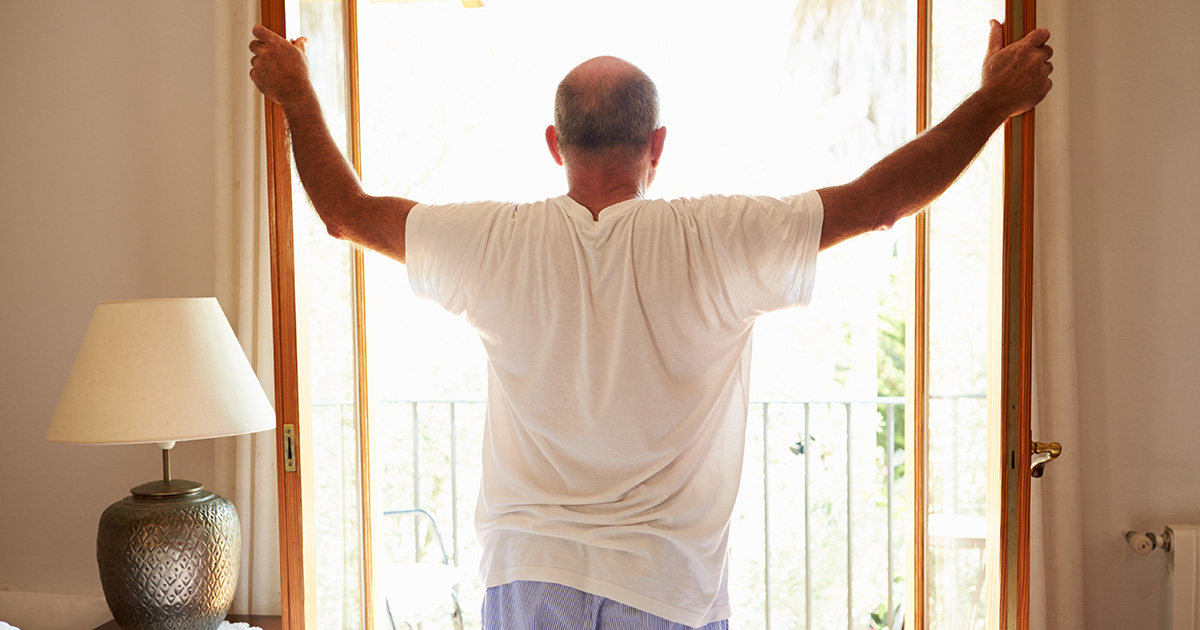The Woolcock Institute of Medical Research

Shining light on sleep
Earlier this month, the Woolcock’s seminar series restarted in the Collaboration Space of our new premises located on the Macquarie University campus.
The seminar series, on sleep and respiratory topics, is a long-standing contributor to our history of research success. They date back to our founder Professor Ann Woolcock, who wanted to promote collaboration and innovation by bringing together researchers who were, in the Woolcock’s early days, spread across six different locations. Each week, researchers gather to hear from one of their own or from one of their colleagues about studies conducted, papers published, guidelines released, opportunities presented and questions to be answered.
In one of our last sleep seminars at Glebe, home to the Woolcock for 17 years, researchers had the privilege of hearing Professor Christian Cajochen talk about optimising lighting to minimise sleep disruption. Professor Cajochen leads the Centre for Chronobiology at the University of Basel and has authored more than 200 original papers.
In many cases, the Woolcock seminars discuss work in progress, explore avenues for future research and raise more questions than answers. Professor Cajochen’s presentation was no exception.
SUPRESSING MELATONIN
As a chronobiologist, his starting point was the statement that human beings are designed to exist in natural daylight “and a lot of us spend hours inside buildings – 22.25 hours a day – so that's probably not really ideal.”
He cited a study conducted in the 1980s in California which measured the natural light exposure of young adults. “They hardly exceeded 1000 lux per day. In humans, light intensity should exceed 2000 lux to be optimal. I don't know optimal for what, but that's what they proposed back then,” he said.
A more recent Australian study measured the amount of light we are exposed to in the evening and concluded that in 50 percent of homes there was enough light to suppress melatonin which can impact sleep.
“There are large individual differences in melatonin suppression,” Professor Cajochen explained. “We also see that in our laboratory – in some people, we can suppress melatonin or attenuate melatonin even with very little light and in some of our patients or study volunteers, we cannot.”
“Also, every one of us has a smartphone. Many also keep it in the bedroom and actually interact with it during bedtime. And we have light pollution in cities – a US study measured sleep behaviour and associated it with the outdoor condition [street lighting and light from nearby buildings] and found that people who were exposed to outdoor lighting had shorter sleep lengths, a delayed bedtime and also delayed get up time.”
Want to stay up to date with our research on sleep and respiratory conditions?
Sign up to our monthly newsletter
MANIPULATING SLEEP-WAKE CYCLES
What is clear is that the way we as humans interact with light in our environment is different to 200, and even 25, years ago.
So, what specific strategies should we be pursuing to promote sleep other than the often-quoted advice to limit use of electronic devices before bedtime and get out into the sunshine in the morning? That’s the subject of continued debate amongst chronobiologists but Professor Cajochen offered plenty of food for thought.
Researchers at the Basel Centre are looking into the ways light can be used to promote sleep and directly affect responses in the sleep-wake centres of the brain.
“Potentially you can use light to manipulate your sleep-wake cycle not indirectly but acutely by applying it at a certain time of day, with a certain type of intensity, with a certain spectrum to treat your patient.”
INCREASING SLOW-WAVE SLEEP
“Wake promotion has been shown very prominently,” but the Basel researchers are interested in the differences in individual responses to light and resultant melatonin and whether light can be used for sleep promotion and for increasing the amount of deep (slow-wave) sleep activity in the sleep cycle.
Research to date indicates that dim light in the evening may increase slow-wave sleep, with the effect even more pronounced in older people. Wavelength is important with specific wavelengths inducing different molecular responses in the brain’s sleep centres. Colour rendering is also an area of interest with artificial lights that more closely match colour under sunlight leading to reductions in sleep latency (or time taken to fall asleep).
That could translate in the years to come to lighting systems that mimic the colour spectrum in natural light, smart systems that change according to natural daylight inputs and LEDs in electronic devices that regulate the photopigments which play an important role in setting our sleep patterns.
His recommendations right now – bright light from the time you wake up until three hours before bedtime, dim light in the evening and very dim light during the night, even if you have to go to the bathroom.










